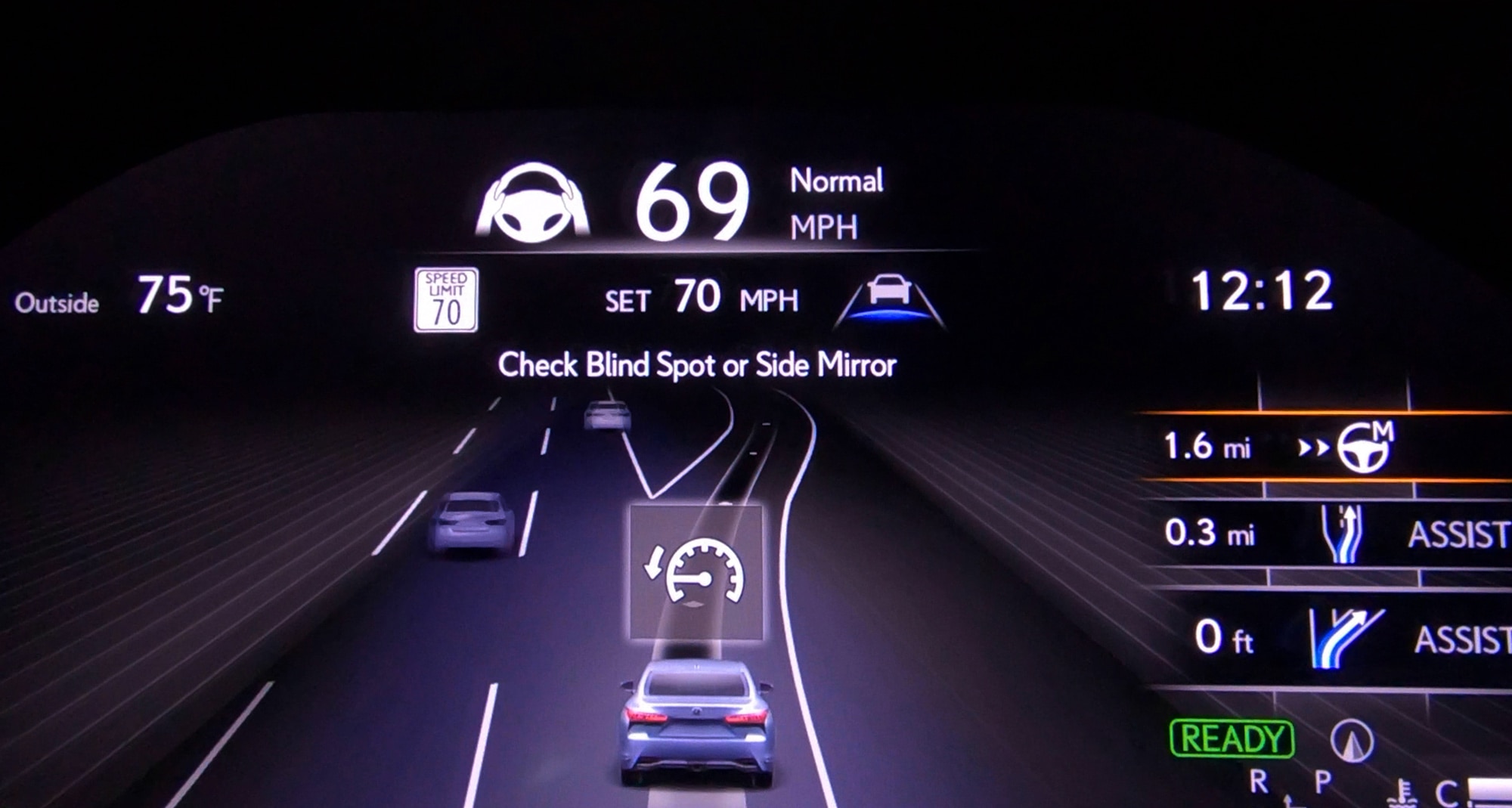What Is Lexus Teammate?
This assistance feature allows you to take your hands off the wheel in limited circumstances.
 Lexus
Lexus
QuickTakes:
Also known as Toyota Teammate, Lexus Teammate is a driver-assistance technology that can take over the main functions of driving — acceleration, braking, and steering — in certain situations, allowing the driver to remove their hands from the steering wheel and rest their right foot on the floor.
On the one-to-five scale of autonomous tech, Teammate falls under the Level 2 heading, wherein the driver must keep their eyes on the road and be ready to take over at a moment's notice. Lexus markets Teammate as a safety and convenience feature, meant to act as a helper. The goal is to reduce driver fatigue, not to replace the driver.
Currently, the system works on certain controlled-access highways only. As it maps more roads, the automaker will presumably expand the system's capability via over-the-air updates.
The tech became available in the U.S. market in fall 2021, making its debut on the all-wheel-drive version of the 2022 Lexus LS 500h. To date, that sedan and the hydrogen-powered Mirai sold by Lexus parent Toyota are the only models to offer Teammate.
It's Hands-Free Except When It's Not
A Teammate-equipped vehicle relies on a suite of forward-looking cameras as well as radar and lidar sensors to assess its surroundings and road conditions. It also uses sophisticated mapping and localization software to know exactly where it is and plan its actions about six miles in advance.
With all this real-time data, the car is able to provide hands-free operation for both driving and parking. Toyota and Lexus call these capabilities Advanced Drive and Advanced Park.
Advanced Drive is essentially a fancy version of adaptive cruise control with lane-keeping and lane-centering assist. In hands-free mode, the car can slow down and speed up with traffic, navigate lane splits and merges, and suggest lane changes to pass slower-moving vehicles.
The driver must put their hands on the wheel and glance toward their blind spot before the car will carry out a lane change. And the car may decelerate considerably to handle something like an interchange. Via the instrument-cluster screen and the head-up display, Teammate keeps the driver abreast of what it's seeing and its intended actions, and the driver may override the system at any time by pressing a pedal or moving the steering wheel.
Drivers Must Remain Active Participants
A driver-facing camera atop the steering-wheel hub watches the driver to ensure their eyes are open and on the road. It also confirms that the driver looks to their blind spot in the aforementioned lane-change scenario.
If the system detects an inattentive or unresponsive driver, it will deploy a series of visual and audible warnings before turning on the hazard lights and eventually bringing the vehicle to a stop on the shoulder or in its lane. The same goes if the driver ignores Teammate's periodic commands to touch the wheel.
Teammate Gives Ample Feedback
To activate the Advanced Drive portion of Teammate, the driver must press the appropriate steering wheel button — showing a speed gauge and a car between two lane lines — while on an appropriate road. The instrument-cluster display and robot assistant will say when the system is ready and when it's active.
If the little steering-wheel icon in the cluster is gray, you need to keep your hands on the wheel. Once it changes to blue, it's hands-free time. The icon will return to gray whenever you need to take back control.
The system requires the driver to place their hands on the wheel to make a lane change. The car still handles the maneuver, but this ensures the driver can quickly countersteer, if necessary.
Should you use the car's built-in navigation in conjunction with Teammate, the system can provide more assistance, such as suggesting the best lane of travel. When an M shows up in the corner of the steering-wheel icon, it means Advanced Drive is ending soon — likely because your route is taking you off the highway — and the driver needs to grab hold of the wheel. A chime and voice command will also sound, should you miss the visual cue.
Advanced Park Makes Backing Into a Space Easy
The other half of Teammate — which Toyota confusingly separates from Advanced Drive in the Mirai — is Advanced Park. Reliant on the car's 360-degree camera system and sonar parking sensors, this feature allows the vehicle to back into a parallel or perpendicular space for you.
All the driver has to do is stop slightly ahead of an open space's centerpoint and push the Advanced Park button — a steering-wheel icon with a P in the corner — to indicate their desire to park.
The system will scan the spot to make sure the car will fit, and if so, the infotainment screen will change to a parking view and ask you to confirm your intention. Press the Start button, lift your foot off the brake, and watch as your Lexus or Toyota handles the gear changes, steering, acceleration, and braking to back into the parking space.
Additionally, the system can help you exit a parallel parking spot. The driver need only press the brake pedal, hit the Advanced Park button, choose the appropriate exit direction, and press Start. When you lift your foot, the car will move back and forth until it's pointing toward the street, at which point the driver takes over.



